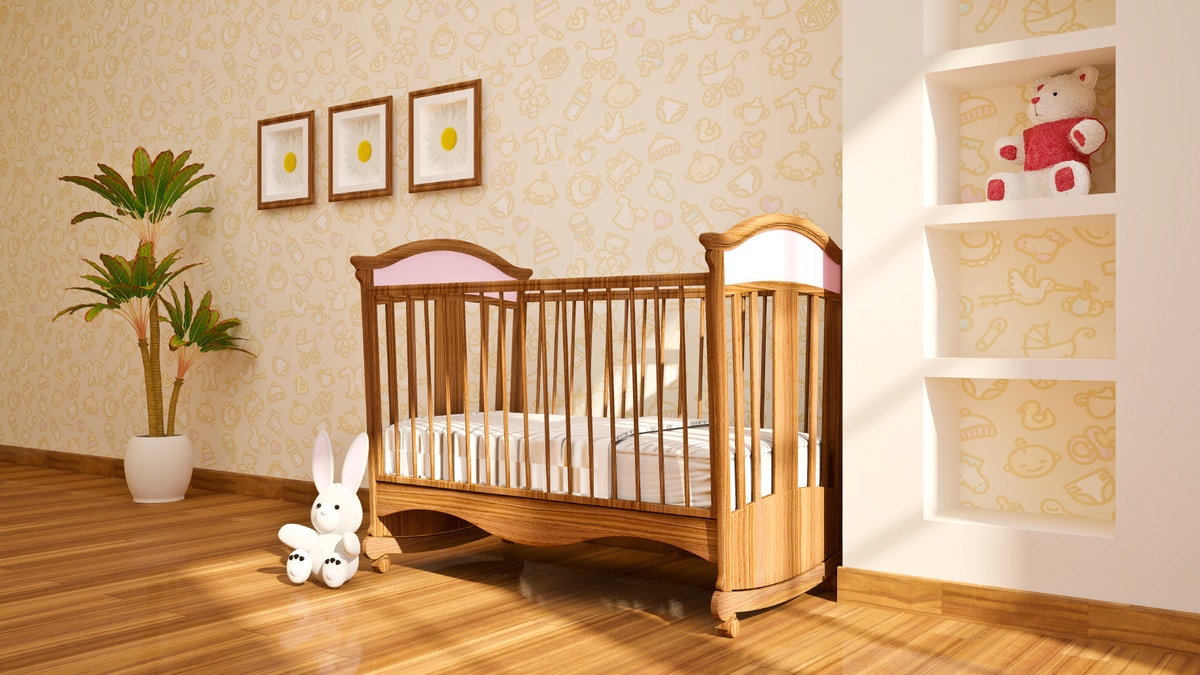
Between picking out the perfect crib, the color palette and the coordinating items, planning your baby’s nursery is fun and full of choices.
Yet one of the most important decisions many moms overlook is choosing a safe crib mattress that doesn’t contain toxic chemicals linked to asthma, allergies and cancer.
Babies breathing in toxic chemicals
Babies spend up to 14 hours a day sleeping. whether that’s in a crib, bassinet, co-sleeper, port-a-crib, portable play yard or a toddler bed. And research shows their mattress can be one of the most toxic places for them.
A study in the journal Environmental Science & Technology found that 20 new and old crib mattresses containing polyurethane foam and polyester foam padding released significant amounts of chemicals known as volatile organic compounds (VOCs), which include the chemicals polyethylene, polypropylene and ethylene-vinyl acetate (EVA).
Plus, many manufacturers also use fragrance allergens in their mattresses.
“[Babies] are volatile and they're most vulnerable when their lungs are developing,” said Kelly Herman, the program director for Healthy Child Healthy World a non-profit that is merged with the Environmental Working Group. Their goal is to educate parents to protect children from harmful chemicals.
These chemicals can be found in crib mattresse because it’s too costly for manufacturers to remove them or find materials that are free of them, Herman said.
Only 11 chemicals are regulated in the U.S.— compared to more than 14,000 that have been banned by the European Union— which means the burden to weed through all of the information is on parents.
Tips for buying a safe crib mattress:
Ask questions.
Even if a mattress is labeled organic, manufacturers can use the claim, regardless of whether 100 percent of the material is truly organic or just one piece is.
“When you have a label that says ‘organic,’ ‘green’ or ‘natural’ it really doesn’t mean a whole lot,” said Lori Popkewitz Alper, a Boston-based mom and founder/editor-in-chief of the green lifestyle blog Groovy Green Livin.
When searching for a mattress, look for those made with organic cotton, wool, and Oeko-Tex or Global Organic Textile Standard (GOTS) certifications. Then, call the manufacturer to verify what materials were used, why they consider it organic and if the mattress contains chemicals and fire retardants.
Choose Green Guard.
To ensure a mattress has a low amount of VOCs, look for those with the Green Guard certification.
“That certification is the gold standard,” Herman said.
CertiPure is another standard but it allows for a higher level of VOCs.
Remember “117.”
“Meets technical bulletin 117,” sounds like a seal of approval, but this label, which can be found on organic mattresses too, actually means the product contains harmful fire retardant chemicals.
Reconsider waterproof. Waterproof mattresses are usually covered in plastics that contain VOCs so it’s best to avoid them. Instead, look for an organic waterproof mattress pad or waterproof non-vinyl waterproof cover.
Steer clear of used mattresses. Although it’s cost-efficient, an older mattress— especially one made before 2009— can contain phthalates and other chemicals.
Air it out.
If you already own a mattress that you’re unsure about, or you’re not satisfied with the manufacturer’s response, air out the mattress for a few days or even weeks before your baby is born.




















